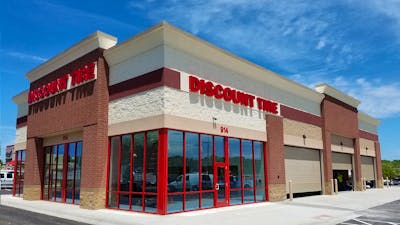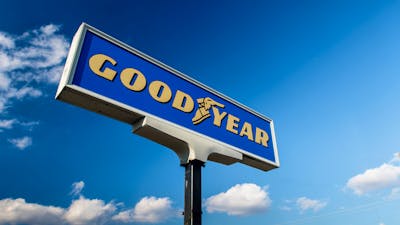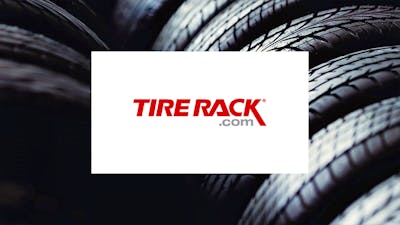Best Tires for the Toyota Camry
When the time comes to replace the tires on your Toyota Camry, you have many great options to choose from. There is no one best tire for all Camrys, but there is a best tire for your specific Camry. It depends on your needs. Maybe you want the most durable tires that will last as long as possible. Or perhaps you are saving college tuition, so watching every dime like a hawk. Either way, we have some good options for you to choose from.
Get the Best Deals on Tires
Here is an overview of the best tire options for the Toyota Camry by wheel size.
Have an older Toyota Camry? See tire sizes for previous years.
Best 16-inch Tires for the Toyota Camry (L, Hybrid LE)
- Hankook Kinergy ST - Best budget tire
- Continental TrueContact Tour - Best mid-priced tire
Best 17-inch Tires for the Toyota Camry (LE)
- Riken Raptor VR - Best budget tire
- Hankook Kinergy ST - Best budget tire
- Pirelli P4 Fourseason Plus - Best superior tire
Best 18-inch Tires for the Toyota Camry (SE, Nightshade, XLE, Hybrid XLE SE)
- Laufenn S FIT AS - Best budget tire
- Vredestein Quatrac 5 - Best mid-priced tire
- Michelin Primacy MXM4 - Best superior tire
Best 19-inch Tires for the Toyota Camry (XSE, TRD)
- Cooper CS5 Ultra Touring - Best budget tire
- Goodyear Eagle F1 Asymmetric - Best mid-priced tire
- Michelin Pilot Sport Cup 2 - Best superior tire
Shop Tires Online and Save
Online tire prices are usually less than in store

Original Equipment Camry Tires
The current generation Toyota Camry sedan is sold in many trims. The combinations from prior model years are too numerous to list, so be sure to start by checking your vehicle's tire size before you shop. The size is shown on the side of every tire.
Here is a list of some of the original equipment tires this manufacturer has fitted to the Camry recently:
- 16” Firestone FT140
- 17” Toyo Proxes A35
- 17” Bridgestone Ecopia EP 422 Plus
- 18” Hankook Kinergy GT
- 18” Michelin Energy Saver A/S
- 18” Bridgestone Turanza EL440
- 19” Michelin Primacy MXM4
- 19” Bridgestone Turanza EL440
- 19” Bridgestone Potenza RE050A (TRD Summer Rated)
Top Replacement Tire Brands for Toyota Camry
Our recommendations below are based on the vehicle trim and the duty for which that trim was selected. We also note which, if any, have a good “Eco” rating for fuel economy by the manufacturer.
Remember to verify which of the sizes your Camry trim has. It is likely one of these:
- P205/65R16 (L) (Hybrid LE)
- P215/55 R17 (LE)
- P235/45 R18 (SE, Nightshade, XLE) (Hybrid XLE, SE)
- P235/40R19 (XSE, TRD
Here are Car Talk’s suggested tire picks based on the wheel size:
- Budget 16-inch: Hankook Kinergy ST - This is a tire from a brand we know priced under $100. Yet, it still earns the minimum 4 of 5 stars from owners in their reviews that we require to recommend a tire. With a UTGQ rating of 680 A A, this tire has average tread life and top scores for traction and temperature.
- Moderately Priced 16-inch: Continental TrueContact Tour - Not only does this tire earn an “EcoPlus” rating for fuel economy, the TrueContact Tour earns very high owner ratings in wet and snowy weather and offers good fuel economy.
- Budget 17-inch: Riken Raptor VR - This grand touring all season radial earns the requisite 4 stars in reviews and is priced well under $100. With a UTGQ rating of 520 A A this tire should last over 50K miles and has great temp and traction ratings.
- Moderately Priced 17-inch: Hancook Kinergy ST - The Kinergy ST is a standard all-season touring tire well-suited to a Camry. With a price of about $120 and UTGQ rating of 680 AA it has a decent treadwear rating and also great traction and temp ratings.
- Cost-No-Object 17-inch: Pirelli P4 Four Season Plus - One tire that caught our attention is the Pirelli P4 Four Season Plus. These tires are priced around $150 and has a UTGQ rating of 620 AA.
- Budget 18-inch: Laufenn S FIT AS - Interestingly, the budget options in this size are all high-performance all-season tires. If you like an aggressive driving style this tire may be for you for just over $100. At this price, the 4-star review average and UTGC rating of 500 A A point to a bargain.
- Moderately Priced 18-inch: Vredestein Quatrac 5 - Ready for a new name and drive in wintery conditions? This all-season tire earns the mountain snowflake. It also has four stars in reviews. The downside is a low UTGQ treadwear rating of 400.
- Cost-No-Object 18-inch: Michelin Primacy MXM4 - An OEM pick for the Camry in some trims, this tire is priced around $250 per tire. However, it has a solid name and reputation. It is UTGQ rating of 500 A A is not a surprise and this tire is likely available everywhere you look. That is helpful if you ever need a matching replacement.
- Budget 19-inch: Cooper CS5 Ultra Touring - Priced around $150 you won’t find a cheaper 4-star reviewed all-season grand touring tire. With a UTGQ rating of 640 A A, it will also last longer than average. Worth a try if you own an XSE or TRD Camry and have a limited budget. Or if you like to smoke the tires at stoplights.
- Moderately Priced 19-inch: Goodyear Eagle F1 Asymmetric - The XSE and TRD trims are all about performance. With that in mind, we searched for a highly-ranked tire from a known manufacturer with no price ceiling that had an all-season, high-performance rating. Our pick is the This tire fits the bill nicely. It earns a UTGQ rating of 500 AA A. Goodyear says this tire was designed for “...drivers of sports cars, sporty coupes and powerful performance sedans who want to enjoy driving their cars any time of the year. It is designed to meet challenging road conditions with confidence-inspiring all-season traction, even in light snow.” It earns a rating of “Excellent” from Tire Rack for both wet and dry performance.
- Cost-No-Object 19-inch: Michelin Pilot Sport Cup 2 - The Pilot Sport Cup 2s are exceptionally grippy summer-only tires that will make the most out of the latest sporty Camry’s excellent handling characteristics. Best of all, it is not very expensive at this size. This tire is the way to go if you want to upgrade from the basic OEM tires. We would add another pick that costs more, but we can’t find a better one in this size.
When Should You Replace the Tires On Your Camry?
There are two regular milestones that will suggest that it’s time to replace the tires, not only on your Toyota Camry but any vehicle in your driveway: Time and mileage.
Considering most drivers cover between 12,000 and 15,000 miles per year, the vast majority of Toyota Camry owners are going to be past the mileage that their original equipment tires were intended to cover before they’ll go past the tire’s usable age.
The life of your tire can be somewhat predicted by its UTQG (Uniform Tire Quality Grade) rating. Tire manufacturers apply their own grades to tires for treadwear, traction, and temperature. When you’re researching tires online, a UTQG will come up next to the tire name in three digits and a number (ex. 500 A A).
You can glean a bit of info from the tires by reading this rating:
- 500 - The durability rating of a tire, compared to a control tire with a tread life of 100. To obtain a grade, tires run on a 640-kilometer course for 11,520 km. Every 1,280 km, the tread depth is measured, to provide a projected tread life. The higher the number, the longer the predicted tread life.
- A - This is the Traction rating of a tire, which indicates how well a tire stops in wet conditions. The highest letter grade is AA, followed by A, B, and C.
- A - The second letter in the UTQG is the Temperature rating, which indicates how well a tire holds up to extreme heat. A is the highest, followed by B and C.
The other consideration is time. Each tire has a raised date code on the sidewall. The number begins with the letters “DOT” followed by 12 digits in three four-digit groups. The date code is the third group of four digits. To decipher the date of your tires, the first two digits represent the WEEK the tire was produced, and the second two digits represent the YEAR.
For example, if your tire’s date code is 3217, that indicates the tire was manufactured in the 37th week of 2017, or sometime between September 11 and 17th that year.
Once tires go beyond five years old, it’s time to consider replacing them. Tires are made up not just of rubber and steel or kevlar belts, but chemicals that help the tires resist UV rays, temperature changes and a lot of other environmental hazards. Those chemicals start to break down after five years or so, and the tires aren’t doing the job that they need to do.
See our recommendations for the Best Insurance for your Toyota Camry
See our recommendations for the Best Extended Warranty for your Toyota Camry
Why Not Replace with Original Toyota Equipment Tires?
There’s no harm in replacing your tires with the shoes it came with from the factory. However, depending on what kind of driver you are, there are significant reasons to purchase something different.
You only need to purchase ONE set of tires for your car every four years or so, depending on how much you drive. When an auto manufacturer purchases tires, they buy them by the hundreds of thousands. For the manufacturer, the decision to choose a supplier one brand or another comes down to a price point.
For you, your consideration may be completely different. If you could get a tire that stopped 20 feet shorter for an additional $10 per tire over the original equipment, you’d probably do it. Similarly, if there was a tire that provided less road noise or longer tread life for a minimal investment overstock, chances are, you’d probably decide on the slightly more expensive tire.
Changing Toyota Camry Tire Sizes
Depending on the year and model, you may be shopping tires to fit anything between 15-inch for older models to 19-inch wheels with various widths and sidewall sizes along the way. It is possible to change the wheel and tire sizes, but a general rule of thumb is to keep the total diameter of the wheel and tire the same. So, that means that downsizing an 18-inch wheel to a 17-inch wheel would include a proportionate upsizing of the tire sidewall to compensate.
Downsizing wheels has its advantages. Benefits include:
- Better ride quality – More rubber means more cushion for poor road conditions.
- Cost reduction – Big tires are expensive, so moving to a smaller wheel size will mean less costly tire purchases.
- Seasonal changes – Winter and snow tires are available for a larger selection of smaller wheel sizes and the narrower footprint will provide better traction.
- Off-road – Many people choose to downsize wheels for off-road use to increase the vehicle’s shock absorption capabilities and bump traction on loose surfaces.
On the other side of the coin, going up in wheel size has its benefits:
- Better handling – Slimmer profile tires make for less rubber to move around.
- Better looks – This one’s subjective, but many people feel that larger wheels look better than smaller wheels with more rubber.
- Better braking – Larger, wider wheels provide a bigger patch of rubber on the ground to slow the vehicle, reducing braking distance.
How to Read Tire Sizes
When reading tire sizes, it’s important to understand what the numbers mean. Let’s use an all-season tire with a 235/65R17 103H specification as an example:
- 235 - indicates the width of the tire from one sidewall to the other in millimeters. This tire is 235 millimeters wide.
- 65 - indicates the aspect ratio, or sidewall height, as a percentage of the tire’s width. In this case, it’s 50 percent or of the tire’s width.
- R - means radial tires. Radials are the most common type of automotive tire and have fabric woven in at various angles with a tread that is strengthened with additional layers of rubber.
- 17 - indicates the wheel diameter.
- 103 - is the tire’s load rating.
- H - is the tire’s speed rating. V-rated tires have a maximum top speed of 130 mph.
You may have noticed that the Toyota Camry tire sizes have different diameters and also different aspect ratios. Generally, automakers choose tires that have the same or similar outer diameter. This allows them to have only one speedometer setting.
Now that you know what comes on the new Toyota Camry and how to read the size numbers, let’s look at the different types of tires available to you. Depending on the type of driving you’re doing, where you live, and the weather, you have a variety of choices for tire types:
- Touring and All-season - tires provide a smooth ride, good wet and dry traction, decent winter traction, and longer tread life. These tires are acceptable for winter use but can’t be expected to provide the traction and stopping power than a dedicated winter tire can.
- Performance tires - are focused on providing confident handling, better wet and dry traction, and a sporty feel. Their higher grip and speed ratings come with a tradeoff of shortened tread life and reduced ride quality.
- All-terrain tires - are built to maximize off-road traction and provide good durability overall. Their construction means more noise and less comfort on the road, but winter traction and tread wear are acceptable.
- Winter and snow tires - are made with special rubber compounds that maintain grip and pliability when temperatures drop. patterns to maximize the vehicle’s ability to start and stop on very slippery roads.
Tire Sizes By Year
| Year | Trim | Size |
|---|
Shop Tires Online and Save
Online tire prices are usually less than in store

FAQ
- What is the best Toyota Camry tire pressure?
Check inside your driver’s side door for a white and yellow label that will tell you the exact tire pressure recommendations for your Camry model. Note that the pressure on the tire itself is never the correct setting, but rather a maximum.
- How often should I rotate my Camry’s tires?
Rotating tires is more about the tire than it is about the car. A typical rotation interval is somewhere between 5,000 and 7,000 miles, though specific cars and tires may change those numbers a bit. The Camry is a front-wheel-drive vehicle, so the front tires will be worn more quickly than the rears. It’s important to keep this in mind and to not ignore the need to rotate your tires.
- What is the best Camry tire change kit?
Your Camry should have come equipped with a compact spare tire and changing tools in the trunk. In this case, you already have everything you need to physically change the tire, but you may want to carry an extra roadside emergency kit with an upgraded lug wrench, jumper cables, and emergency markers just in case.













